Can You Add Color To An Existing Tattoo?
Often, we don’t give our first tattoo much thought. Perhaps you saw a badass black tattoo on a movie and instantly thought, ‘’Okay, I need to have that!’’ So, you drive to a tattoo parlor and get it done. Once the endorphin rush subsides, you begin to wonder that you would have liked a more vibrant tattoo rather than a standard black ink one.
We all know tattoos are pretty permanent. Yes, there are tattoo removal procedures, but they can be quite expensive. Is there a cheaper route you can take to splash more colors on your body art? Can you add color to a black and gray tattoo?
We have tried to find the answers to these questions in this piece.
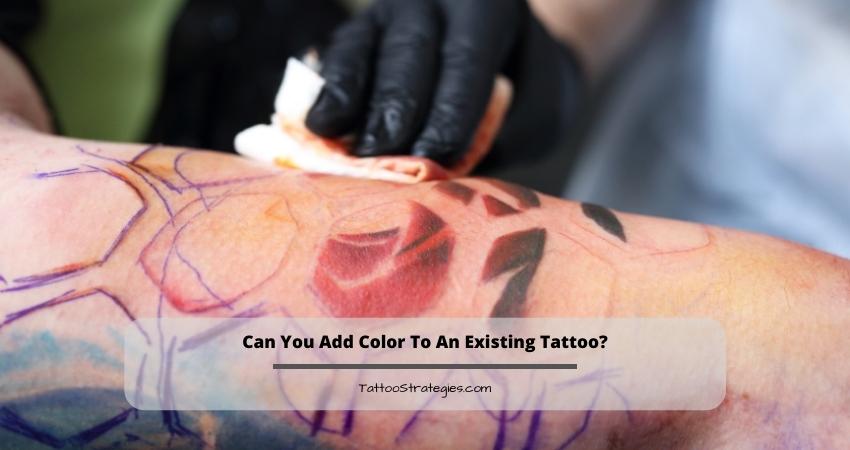
Can You Add Color To A Black And Grey Tattoo?
Black and gray tattoos are colorless tattoos that artists draw with grayscale shading. These tattoos have an Alfred Hitchcock vibe as they are reminiscent of the black and white glamor of the film noir era. But what if you want to go for a more colorful body art display later on? Can you layer other colors over black and white tattoos?
It’s possible to put color over black and gray tattoos, but the new tattoo might appear darker than you would like because of the black gradients. Coloring around the edges will be a better option. If you want to keep the recoloring option open, make sure to tell the artists before getting a black and grey tattoo so that they can draw the tattoo accordingly.
You also want to be 100% sure before attempting a recolor. Artists create a unique sense of depth and dimension by using different shades of gray. You can’t achieve similar results using other colors. If you want the same levels of depth and dimension in your new tattoo, you might be disappointed.

Can You Add Color To A Black Tattoo?
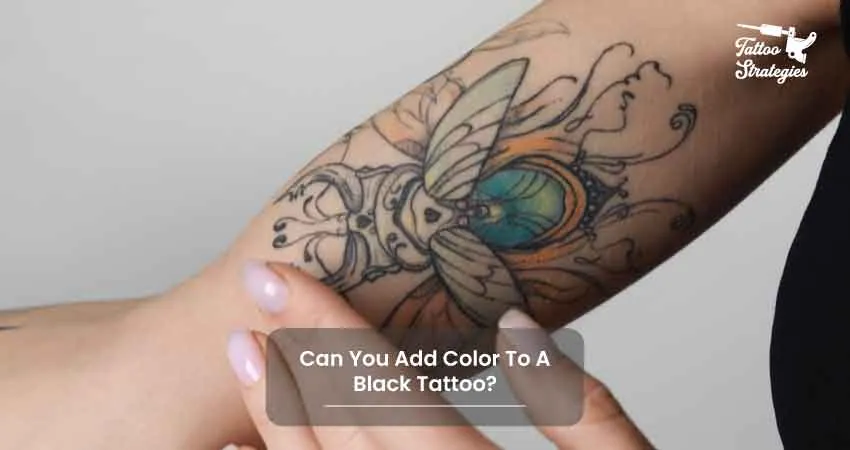
If you want to color over a black tattoo, it will have a dark aftertone. So, making it aesthetically pleasing would be a big challenge for the artist. To do a cover-up tattoo over a black one, you have to fade out the original tattoo. You can undergo laser tattoo fading sessions to fade the tattoo. You will require several tattoo removal sessions before getting the new tattoo.
The simpler and more cost-effective option is to come up with a new tattoo design that adds to the existing design rather than getting a complete cover-up. This way, you can use the current design as a springboard toward an improved and larger version. Consult a professional for new design ideas.
Can You Recolor A Tattoo?
Yes, it is possible to recolor a tattoo. You can make a new color in your tattoo by mixing two colors that go well together. One color can already be in your tattoo, and the other color can be added. Or, you might bring in a darker shade of the color you already have. For example, you could add dark blue color to the light blue ink you already have.
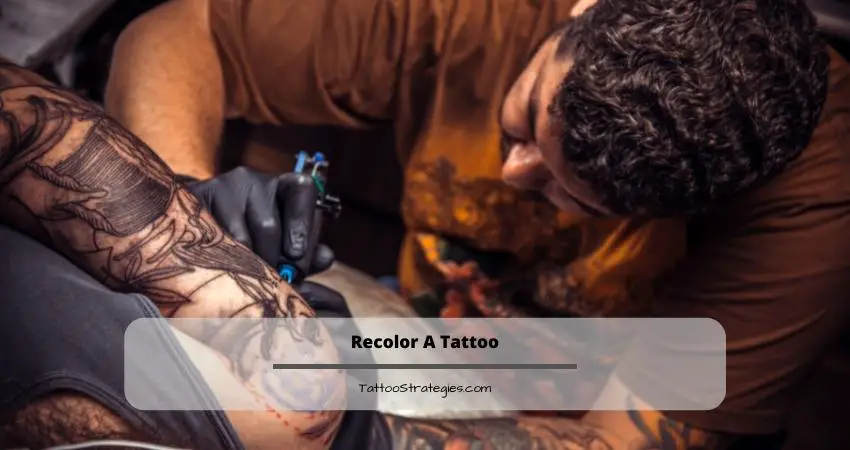
Tattoo recoloring is a popular method for altering an existing tattoo’s appearance. There are a few ways to change the color of a tattoo. The best recoloring approach relies on the design of your tattoo and, of course, your personal preference.
The practitioner can inject ink into the skin to darken or lighten small tattoos. Tattoo removal may be the best choice for more detailed and larger tattoos. Practitioners often use laser beams to break up the ink particles in the skin. Afterward, the pigment gets assimilated into the skin.
It’s important to use inks that belong to the same color family when changing the color of an existing tattoo. This will help your tattoo look like it was done on purpose. Always consult a professional when choosing a color for your tattoo. They will know your skin tone and help you pick the right color.
Can You Outline A Tattoo In Color?
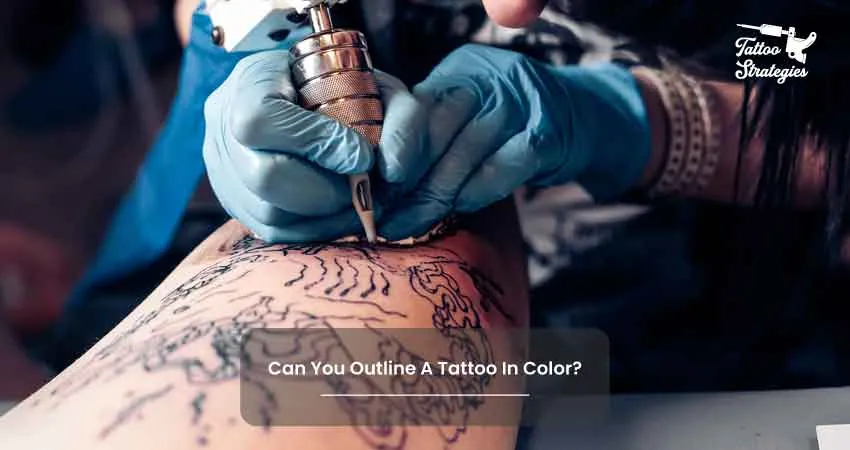
Technically, it’s possible to outline a tattoo in color. But, there’s good reason for tattoo artists to choose black as their primary color for drawing the outline of a tattoo. It’s because black fades slower than any other color. If you select a different color for outlining a tattoo, it will not be as durable as black ink.
How To Do Color Tattoos?
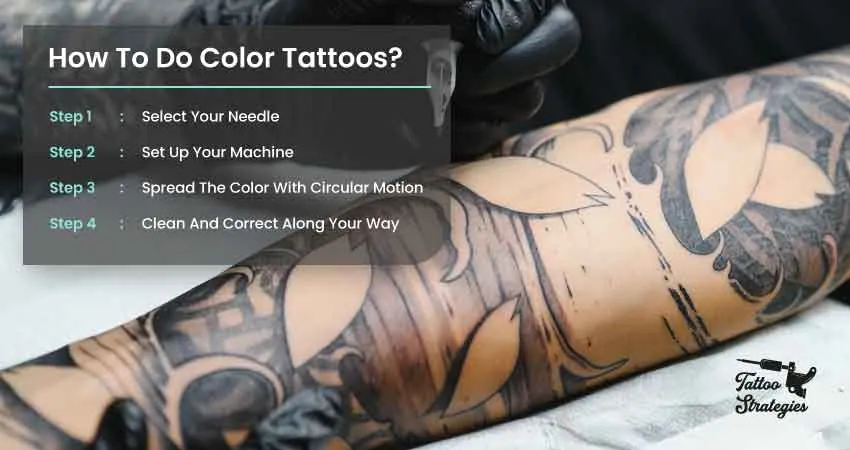
Step 1. Select Your Needle
Before tattooing someone, the artist must comprehend the fundamentals of the art. One of the basics is to use the right needle for the right application. To get the best color in your tattoos, you must use the appropriate type of needle. For example, choose round tattoo needles if you want to shade an intricate area. For larger body coverage, opt for magnum needles.
Step 2. Set Up Your Machine
After you choose your needles and set up your colors, you need to get your machine ready to tattoo. You need to calibrate your machine differently for lining and shading. To pack in solid colors and achieve the desired whips, you will need to adjust your machine so that it strikes the skin more directly.
The speed of the machine will change based on where on the body you are going to put the tattoo. Most of the time, running colors on a tattoo need to be done more slowly than the lining. Remember to clean the skin around the outline with soap and water to remove leftover ink and stencil marks.
Step 3. Spread The Color With Circular Motion
Apply the tattoo ink with small, circular motions. If you keep up a steady pace, you can cover a large skin area in a short amount of time. Make sure that each little circle slightly overlaps the previous one until the whole area is covered. Two sweeps should be enough for you to complete the coloring.
You should not keep the machine in one spot for too long or exert too much pressure on the skin. Doing this will hurt the skin a lot, which could lead to scabs or scars. Don’t keep the machine idle when moving it across the skin.
Try to perfect the color in your first attempt so that it looks better, and you don’t have to make as many holes in the skin. If you put too much color on the skin, it won’t get any brighter.
Step 4. Clean And Correct Along Your Way
As you add color to a tattoo, pools of ink and blood get all over the skin. Take the time to wipe away the extra ink and blood carefully. You don’t want to mess up the tattoo by coloring over the outline by accident.
If the area is supposed to be a solid color, but the skin is showing through, fix it right away. You might need to make smaller circles and cover smaller areas simultaneously. Slow down and check what you’ve done.
Don’t forget to thoroughly clean your machine’s tube and needles whenever you change colors or shades. The mix will be messy and hard to use if you don’t do this.
Final Thoughts
It could be frustrating when you have a miscommunication with the tattooist and end up with a tattoo with the wrong colors. Or sometimes you might have a change of heart and explore some more vibrant tattoo designs. Tattoo recoloring has got your back, even though it’s not the easiest tattoo modification to make.
